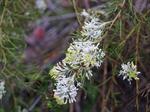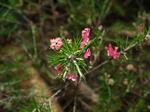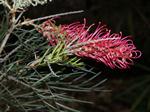
Learn to Grow Grevilleas
- As a landscape plant
- As a cut flower
Grevilleas are a wide group of plants, all but seven species coming from Australia.
- widespread across Australia
- occur in both cool temperate, and hot tropical climates
- there are around 250 species. About half of these are native to the south west corner of Australia
Known commonly as “Spider Flowers”; the Grevillea flower is more like a brush than a traditional flower. It has obscure petals, but is none the less very colourful. Flower colour varies greatly; and most hold their flowers for a long period.
Grevilleas include both small to very large plants (from prostrate ground covers, through small and medium shrubs up to large trees). Their hardiness is variable according to species. The foliage is also variable ranging from small, entire leaves to lobed or pinnate leaves. All are arranged alternately on the stems and some have hairy under surfaces. Most have a medium to fast growth rate.
The way you should treat a particular species of Grevillea will differ from place to place, and according to what you are trying to get from the plant.
Lesson Structure
There are 8 lessons in this course:
-
Introduction & Resources
-
Grevillea Culture - Planting, staking, mulching, watering, pest & disease, feeding etc.
-
Propagating Grevilleas.
-
The Most Commonly Grown Varieties. Latest hybrids and trustworthy oldies.
-
Other Important Groups. Poorinda hybrids, banksii hybrids, etc.
-
The Lesser Grown Groups. Species, size, flower colour and foliage.
-
Making The Best Use of Grevilleas. In containers, in the ground, growing for profit, etc.
-
Special Assignment - One plant or group.
Aims
-
Identify a range of different Grevilleas.
-
Explain the culture of different types of Grevilleas.
-
Propagate different Grevilleas
-
Discuss different uses for Grevilleas
-
Compare identifiable characteristics and cultural preferences of a range of Grevilleas.
-
Discuss a range of Grevillea hybrids and cultivars
-
Identify and compare a range of commonly cultivated Grevilleas.
-
Discuss one Grevillea species, cultivar or type in depth.

Grevilleas Can Be Grown Almost Anywhere
While most Grevillea species prefer a freely draining soil and relatively good sunlight; there are species that tolerate wet conditions, and shade as well. Some grow naturally in wet rain forests, others in almost desert like places; some are from the tropics and others from snow prone alpine areas. If you get the right cultivar for where you live; you can grow them almost anywhere.
Light
Many that grow well in full sun; some tolerate shade, but most of those will do better in a position with filtered light, such as under the canopy of tall trees; rather than heavy shade.
Soil Type
While many grow well in sands and sandy loams; many will grow equally well in clays and clay loams; provided drainage is reasonable.
If your soil is heavier (ie. Clay or clay loam); grevilleas can still do well on a slope or embankment; or where the topography is flat; consider creating mounds or raised beds to plant Grevilleas into.
Nutrition and Acidity
Most cultivars will need minimal feeding; and too much feeding can cause burning of tissues. Don’t use strong or fast acting fertilisers. Grevilleas, like most plants in the Proteaceae family, can be particularly sensitive to phosphorus. Don’t use fertilisers high in phosphorus.
Some tolerate excessively alkaline or acid soils better than others. Consider where the species originated.
The following are more tolerant of high alkalinity than many – Grevillea Clearview David, Grevillea thelmanniana ssp preissii and Grevillea shiressii
How You Might Use What You Learn?
- As a nurseryman
 As a plant breeder
As a plant breeder- As a cut flower grower
- As a landscaper
- As a garden writer or consultant
- As a plant collector or passionate amateur gardener.
